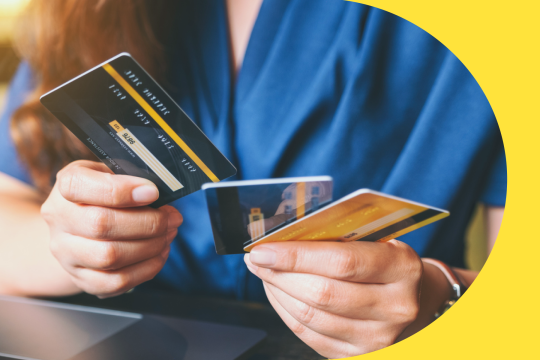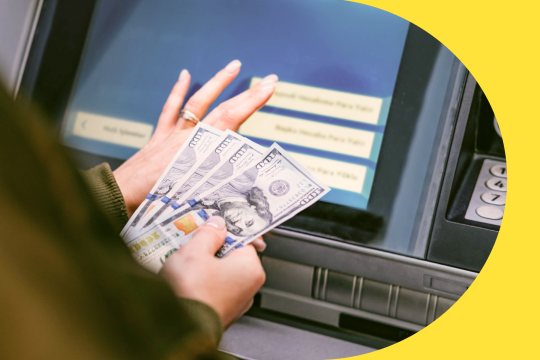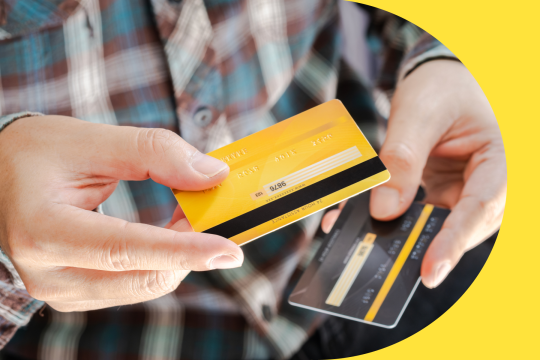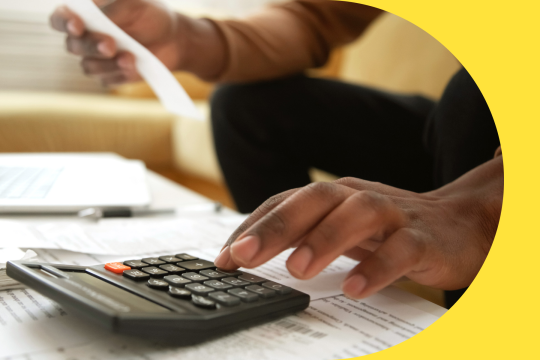Knowing how to calculate credit card interest may not be the first thing you list on your dating profile or resume. But it can help you manage your credit card balance and predict how much you’ll owe — which helps when it comes time to pay off those date night dinners or workday coffee runs.
This guide will clear up your questions about credit card interest and give you the tools to calculate it. Let's dive into the workings of credit card interest.
How does credit card interest work?
If you don’t pay off your balance before your payment due date, your credit card issuer charges you interest. Usually, when you sign up for a card, your issuer determines your interest rate, also known as the annual percentage rate (APR). If you ever fail to make the minimum payment on what you owe, the issuer applies this rate to the outstanding balance on your credit card.
Typically, you’ll receive your monthly bill (or billing statement) on the same date each month. The time between when you receive your bill and the date you must make your monthly payment (also the same date each month) is known as your grace period.
For example, say you receive your bill on the 1st each month, and your payment is due on the 26th each month. If you receive a bill on the 1st for borrowing $100 in the last billing period, your grace period extends from the 1st to the 26th. As long as you pay the full $100 by the end of this period, your credit card issuer will not charge you any interest on your $100 balance. But if you don’t pay the full $100 by the 26th, you’ll begin to owe interest on that amount that day.
So, how is interest calculated?
Calculating interest hinges on several factors, including the APR and the method your credit card provider uses. The average credit card interest rate varies, but the most common rate credit companies use is the daily periodic rate (DPR), which is the APR divided by the number of days in a year. The company will multiply the DPR by the average daily balance on your credit card over the course of your monthly billing period — which is the total of each day’s balance divided by the number of days in the billing cycle.
Here's a simplified formula to provide a snapshot:
- (Average daily balance × DPR) × number of days in billing cycle = Interest
Picture it this way: If your average daily balance is $50, the DPR is 1%, and there are 31 days in your billing cycle, your interest rate would come out to 15.50%. Here’s what that equation looks like:
- ($50 average daily balance x 1% DPR) x 31 days in billing cycle = 15.5% interest rate
It's also important to note that cash advances may have different interest rates and may start accruing interest immediately. This is because credit card issuers know that people will care less about higher fees or not have a choice if it’s a matter of convenience or an emergency, and issuers can make more profit this way.
When is credit card interest charged?
Credit card interest starts accruing when your grace period ends. Your grace period is typically 21-25 days, starting the day your billing cycle ends and ending the day your payment is due. After this time, your credit card provider will charge interest on any balance you still carry from your billing period. If you pay off your entire balance before the grace period ends, your credit card provider won’t charge interest.
Credit cards have a revolving nature, meaning as you repay what you’ve borrowed, that credit becomes available for you to use again, giving you a flexible borrowing and repayment cycle. However, when you don’t pay off what you borrow within a given period and instead carry your balance into the next billing cycle, it triggers interest charges, which your credit card issuer adds to your outstanding balance. This cycle of carrying balances into other billing periods and accruing interest can quickly increase your overall balance and leave you with a lot of debt, so try to pay off your balance before adding new charges.
The day the interest starts also affects your balance. Even though you receive your bill on the same date each month, your interest won’t accrue until the grace period ends. Instead, your credit card issuer calculates your interest daily, meaning they charge you interest the first day after your grace period, and then more two days after your grace period, and so on.
So, the sooner you can pay your balance, even after a grace period, the sooner you can curb those interest fees and avoid further charges.
Types of interest rates
Credit card interest rates fall into one of three categories: variable rates, fixed rates, and promotional interest rates. Here’s a brief look at each:
1. Variable rates: Variable rates are subject to change and tie into an index interest rate, such as the U.S. prime rate — which is the interest rate that big banks use when lending money to clients with stellar credit scores. Your credit card’s APR will fluctuate if this index interest rate changes, meaning your interest charges may vary monthly.
2. Fixed rates: Unlike variable rates, fixed rates remain constant over time. However, “fixed” doesn’t mean “permanent.” Credit card providers can change fixed rates, but the law requires them to notify cardholders in advance before making such changes.
3. Promotional interest rates: Promotional rates are temporary. Credit card companies offer these on a temporary basis to attract new customers or encourage existing customers to use their cards more. Promotional rates have expiration dates, after which they revert to the standard rate, which might be higher.
Knowing the differences between these types of rates can help you manage and anticipate any changes to your own interest rate.
How to calculate credit card interest
Calculating credit card interest might initially seem intimidating, but with a step-by-step approach, it becomes straightforward. Here’s how to calculate it:
1. Convert your APR to a daily rate: The annual percentage rate (APR) is the yearly interest rate. To calculate the daily interest rate, divide your APR by the number of days in the year (365, or 366 in leap years).
2. Find your average daily balance: To find your average daily balance, add each day’s balance for the billing cycle, then divide by the number of days in that cycle.
3. Calculate your interest charges: Multiply your average daily balance by the daily rate, then multiply by the number of days in your billing cycle.
You can also use an online interest calculator to automate the interest calculation process for quick and accurate results.
How to avoid paying interest on credit cards
Avoiding interest charges on credit cards is a financially savvy move. Here are some practical steps to achieve this:
-Pay your balance in full every billing cycle: Pay the total amount you owe each month before the due date to ensure you don’t rack up any interest.
-Pay as soon as possible: Paying earlier or more frequently reduces your average daily balance, lowering how much interest your credit card issuer can potentially charge.
-Use a credit card with a 0% introductory rate: These cards offer a 0% interest rate for a specified period, after which the rate reverts to the standard APR. Make sure you pay off the balance before the promotional period ends to avoid interest charges.
-Take advantage of grace periods: Grace periods are interest-free periods that allow you to pay off new charges without incurring interest. Make sure you pay your entire balance before the period ends to avoid interest.
- Consider a balance transfer: If your current card has a high interest rate, you could look into transferring your balance to a card with a lower or 0% introductory rate.
When you use these strategies diligently, you can quickly reduce or even eliminate interest charges on your credit cards, paving the way for better financial health.
Avoid credit card interest with EarnIn
Learning how credit card interest works and how to calculate it is key to tracking your credit efficiently and avoiding excessive debt. Using a same-day pay tool like the EarnIn app can also help you avoid taking on credit card debt in the first place. EarnIn includes a free credit monitoring tool to help you keep a close eye on your credit score and usage too.
Understanding and managing your credit card interest while leveraging tools like EarnIn can set you on the path toward achieving your financial goals.
Download EarnIn and give yourself more tools to move forward. You can also use our credit card payoff calculator to take control of your debt with a personalized plan that gets you out of debt faster and saves you money on interest.
Please note, the material collected in this post is for informational purposes only and is not intended to be relied upon as or construed as advice regarding any specific circumstances. Nor is it an endorsement of any organization or services.
You may enjoy












EarnIn is a financial technology company not a bank. Subject to your available earnings, Daily Max and Pay Period Max. EarnIn does not charge interest on Cash Outs. EarnIn does not charge hidden fees for use of its services. Restrictions and/or third party fees may apply. EarnIn services may not be available in all states. For more info visit earnin.com/TOS.






